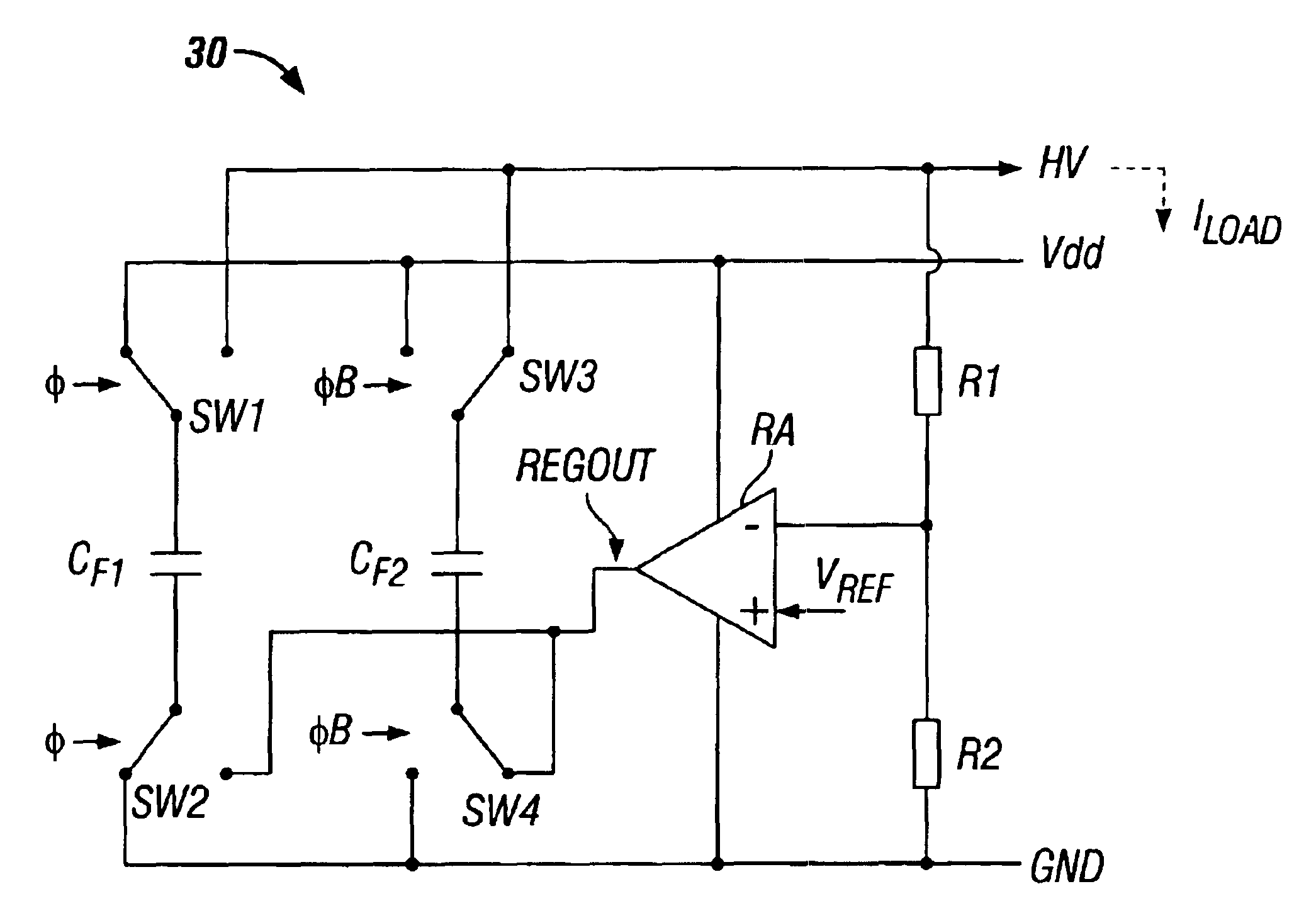Continuous linear regulated zero dropout charge pump with high efficiency load predictive clocking scheme
a charge pump and linear regulated technology, applied in the field of charge pumps, can solve the problems of low efficiency, significant disadvantage, and significant inefficiency in the pump design
- Summary
- Abstract
- Description
- Claims
- Application Information
AI Technical Summary
Problems solved by technology
Method used
Image
Examples
Embodiment Construction
The first aspect of the present invention is a scheme for voltage regulation that allows the regulated pump output voltage to be the highest voltage in the charge pump, i.e., the regulator has zero dropout. Referring to FIGS. 3a through 3c illustrating a first preferred embodiment of the invention, the clock signals Φ and ΦB are still present, and at the top, the flying capacitors CF1 and CF2 are connected in the same way as in FIG. 2a. At the bottom of flying capacitors CF1 and CF2, rather than being connected selectively between GND and Vdd as in FIG. 2a, the capacitors are selectively connected between Gnd and the output node (REGOUT) of a regulator amplifier RA. Thus switches SW1 through SW4 alternately switch the flying capacitors between Vdd and GND, and HV and the voltage on the node REGOUT in an interleaved manner.
The voltage divider (resistors R1 and R2), the regulator amplifier RA and the applicable flying capacitor (CF1 or CF2, depending on which capacitor is then connect...
PUM
 Login to View More
Login to View More Abstract
Description
Claims
Application Information
 Login to View More
Login to View More - R&D
- Intellectual Property
- Life Sciences
- Materials
- Tech Scout
- Unparalleled Data Quality
- Higher Quality Content
- 60% Fewer Hallucinations
Browse by: Latest US Patents, China's latest patents, Technical Efficacy Thesaurus, Application Domain, Technology Topic, Popular Technical Reports.
© 2025 PatSnap. All rights reserved.Legal|Privacy policy|Modern Slavery Act Transparency Statement|Sitemap|About US| Contact US: help@patsnap.com



